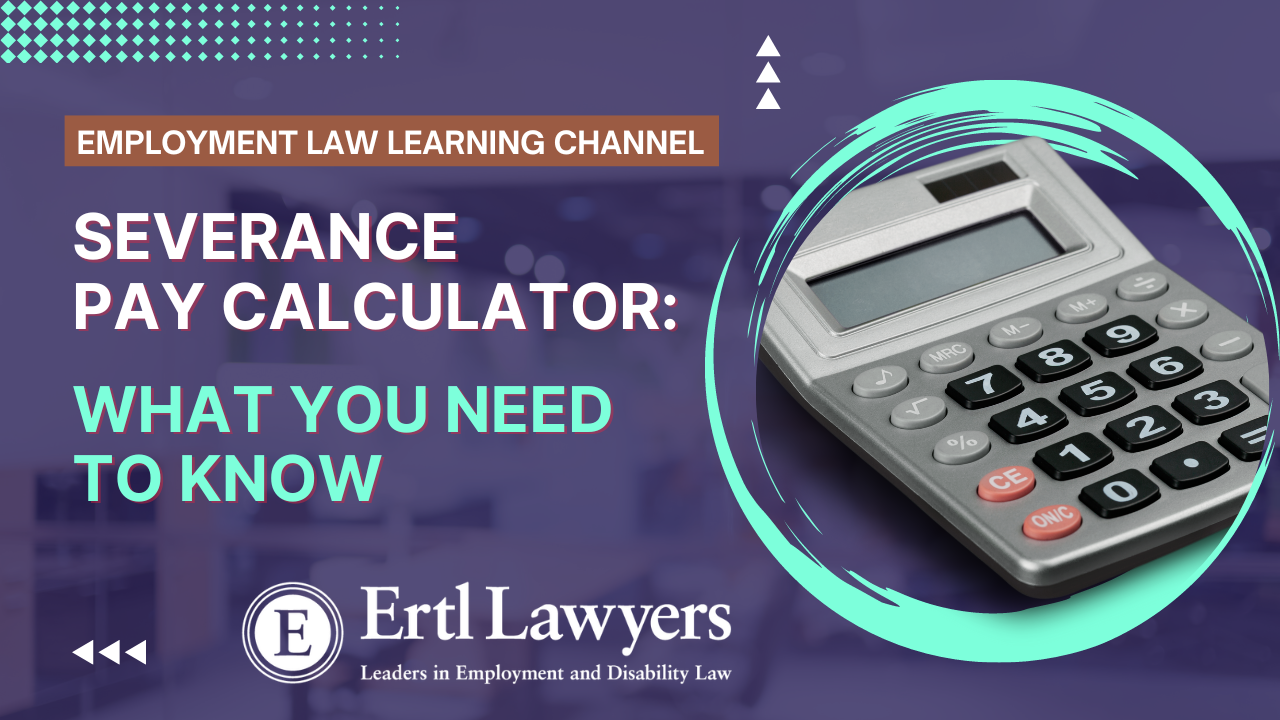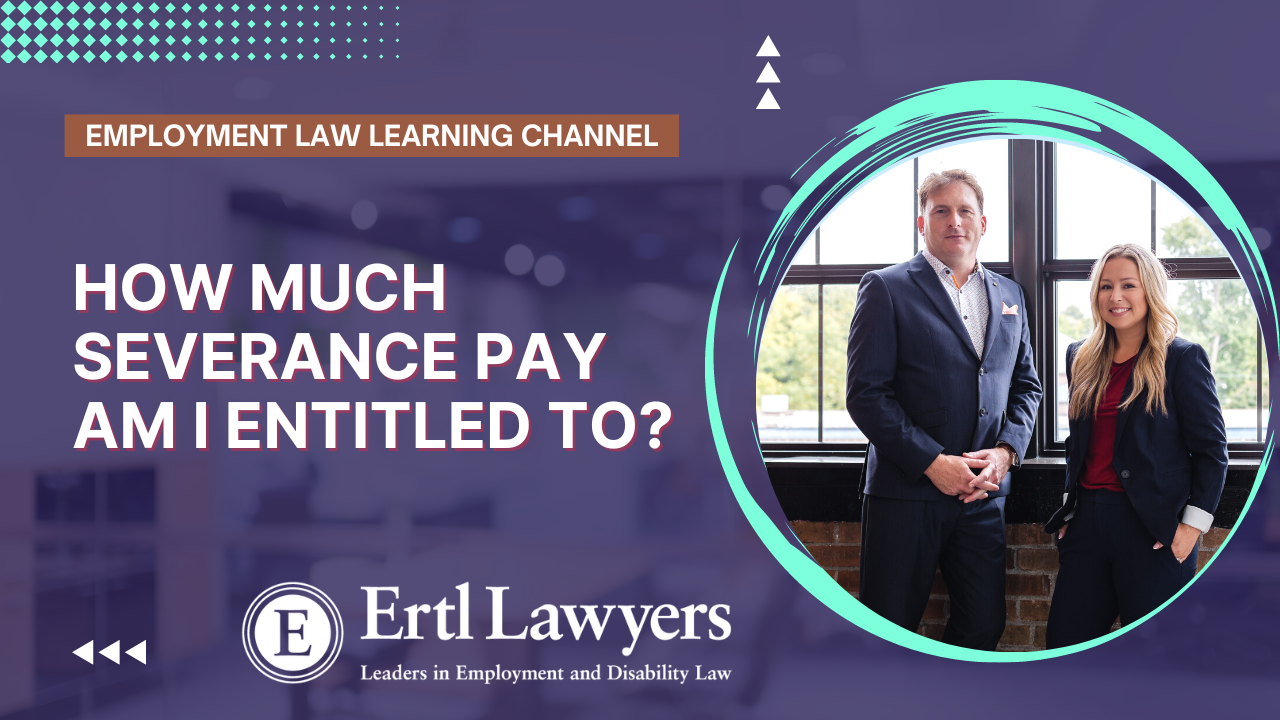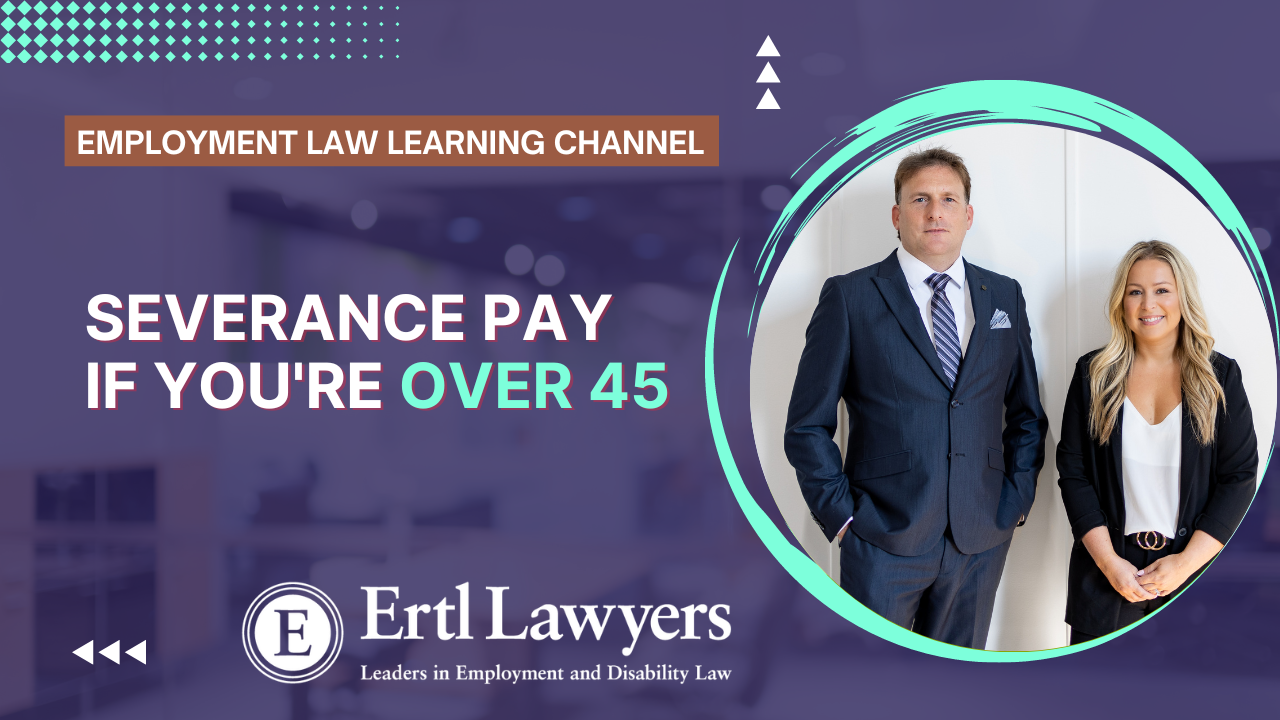Severance Pay
Severance Pay (Overview)
What is severance pay and how is it calculated? We’ll discuss this below.
If you are a non-unionized employee in Canada, and you have been terminated without cause (i.e., through no fault of your own), you are generally entitled to advanced notice of your termination or pay in lieu of notice.
Pay in lieu of notice is sometimes referred to as severance pay, termination pay, or a severance package.
The minimum amount of severance is determined by your provincial employment standards legislation. For example, in Ontario it is called the Employment Standards Act. In Nova Scotia it is called the Labour Standards Code. This type of severance pay only considers your length of service, nothing else.
The maximum amount of severance is determined by the common law which, in almost every case, is greater than the employment standards (or statutory) severance pay. This type of severance considers a host of factors, including: your age, length of service, type of job, availability of similar jobs in the market place, your health, your income level, etc.
When an employer fails to provide the proper amount of severance it is called a “wrongful dismissal”.
If you believe your severance package is unfair, call us. We offer a free, no obligation consultation. We’ll help you understand your rights.
Learn More»
Severance Pay Calculator
Use our severance pay calculator to help you calculate your severance. It works for all of Canada, including Ontario and Nova Scotia.

Severance Pay (What You Need to Know)
Severance Offer Deadlines
If you’ve been handed a severance package with a deadline, don’t panic. Often an employer’s first offer is not their best, and you could be giving up significantly more by signing too soon. For the most part, a deadline does not change what you are entitled to.
Your Employment Contract
Sometimes, your employment contract might set out the amount of severance pay you are entitled to when you are terminated. But, in many cases, the contract is not enforceable – meaning you could be entitled to more! The only way for you to know is to consult with an experience employment lawyer. Call us today.
Calculating Severance Pay
There is no rule or law that says you are entitled to only 2 weeks per year of employment. That’s a myth. In Ontario and in Nova Scotia severance is determined by reference to legislation and the common law.
The main factors that determine severance pay are age, length of service, the type of job you had, and your employability.
Learn more about how to calculate severance pay in Ontario and Nova Scotia.
Limitation Periods
Under the common law, a terminated employee has 2 years from the date of termination to go after his/her full severance entitlements from their former employer.
Complaints to the Ontario Ministry of Labour or the Nova Scotia Department of Labour, Skills, and Immigration
Don’t call a government ministry (such as the Ministry of Labour) to get legal advice on common law severance pay. They can only help with your bare MINIMUM entitlements, not your MAXIMUM entitlements under the common law.
Moreover, with Ontario’s Ministry of Labour, if you file a complaint with them to get your MINIMUM severance, you are barred from pursuing your MAXIMUM severance pay under the common law!
Terminations with “Just Cause”
If you have been terminated with just cause (and received no severance at all) remember that it is only the employer’s position/argument. Just cause arguments are very difficult for the employer to prove. Generally, you have to guilty of serious misconduct (like theft) in order for the employer to deny paying you severance pay. Talk to us to know your rights!
“One or Two Weeks Per Year” Myth
When it comes to common law severance, there is absolutely no rule that you are only entitled to only one or two weeks per year of employment.
To get a better idea of what you might be entitled to try our severance pay calculator.
Communities We Serve in Ontario
We serve all of Ontario, including:
Ontario West: Windsor, London, Kitchener-Cambridge-Waterloo, Guelph, Brantford, Sarnia),
Central Ontario: Barrie, Orillia, Peterborough,
Southern Ontario: St. Catharines-Niagara, Hamilton, Burlington, Oakville, Milton, Halton Hills, Brampton, Mississauga, Toronto, Caledon, Aurora, Markham, Newmarket, Richmond Hill, Vaughan, Whitchurch-Stouffville, Pickering, Ajax, Whitby, Oshawa, Bowmanville, Clarington, Brock, Scugog, Uxbridge, Port Hope
Ontario East: Belleville, Kingston, Brockville, Ottawa, Cornwall
Northern Ontario: North Bay, Thunder Bay, Sudbury, Timmins, Sault Ste. Marie
Communities We Serve in Nova Scotia
We serve all of Nova Scotia, including:
Halifax Area: Halifax, Hammonds Plains, Bedford, Cole Harbour, Dartmouth, Upper Tantatallon, Fall River, Waverly, Elmsdale, Enfield
South Shore: Bridgewater, Chester, Lunenburg, Yarmouth, Liverpool
Annapolis Valley: Kentville, Windsor, Wolfville, Digby, Greenwood
Central / North: Truro, Debert, Tatamagouche, New Glascow, Pictou, Antigonish, Springhill, Stellarton, Amherst, Parrsboro, Pugwash
Cape Breton: Sydney, Glace Bay
Eastern Shore: Guysborough and area
My employer closed one of its operations and ordered me to report to another location that was 1.5 hours away (one way). I could not have survived the commute. It was a constructive dismissal, and Ertl Lawyers negotiated a severance package to help me while I looked for a new job. I am very happy with the result.
– V.C., Printing Industry, Vaughan
How Much Is Your Severance Pay?
Common law severance pay is different for everyone and depends on such things as your age, length of service, the type of job you had, and the number of available jobs in the marketplace. Consult with Ertl Lawyers today to understand your rights and to make sure you don’t leave anything on the table.
Our help can make all the difference.
Related Blogs
11 Signs of a Sham Performance Improvement Plan
11 Signs of a Sham Performance Improvement Plan Author: David Ertl, Employment Lawyer In the vast majority of cases, Performance Improvement Plans (PIPs) are designed to get rid of employees. As an employment lawyer with over 16 years’ experience, here are my top...
4 Important Facts About Negative Performance Reviews
4 Important Facts About Negative Performance Reviews Author: David Ertl, Employment Lawyer Receiving an unwarranted negative performance review is one sign that your employer is aiming to dismiss you, or else, convince you to quit. Here are some tips regarding...
Parental Leave in Ontario – Frequently Asked Questions
Parental Leave in Ontario - Frequently Asked Questions Author: David Ertl, Employment Lawyer What is parental leave? In Ontario, parental leave is an absence from work commencing after the baby is born. Section 48 of the Employment Standards Act, 2000 explains who is...






